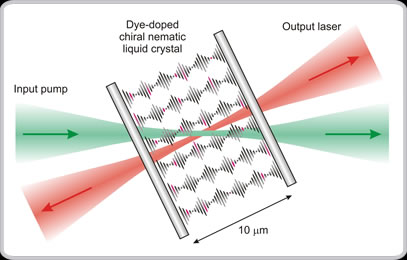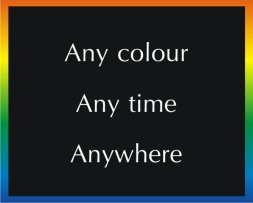 |
 |
||||||||
|
|
Organic technology - Defying conventionMost conventional lasers will consist of a "gain medium" sandwiched between two reflective mirrors, which provide the "resonant cavity". Unlike conventional lasers, the resonant cavity within COSMOS Lasers consists of an organic liquid crystal, which spontaneously self-organises itself into a nanoscale chiral structure. Such chiral structures are examples of photonic band-gap materials. These materials selectively reflect specific regions of the electromagnetic spectrum, as determined by the pitch of the chiral helix, and in a manner similar to Bragg reflection. Examples of such materials also exist In nature, such as the metallic lustre on the carapace of certain beetles, or the iridescence of some butterfly wings.
|
 |
 |
|
Simple and functionalThe beauty of COSMOS Lasers is in their simplicity of construction and operation. By combining this science with additional patented technologies developed by the research team at the University of Cambridge, unique and highly customisable laser solutions can be created. These include: cartridge-style replacement lasers for arbitrary colour selection; continuously tuneable laser sources; multiple simultaneous laser beams of monochromatic or polychromatic emission; and many more. This highly efficient and functional performance leads us to our catchphrase: Any colour, any time, anywhere.
|
|
Further reading
|
|



